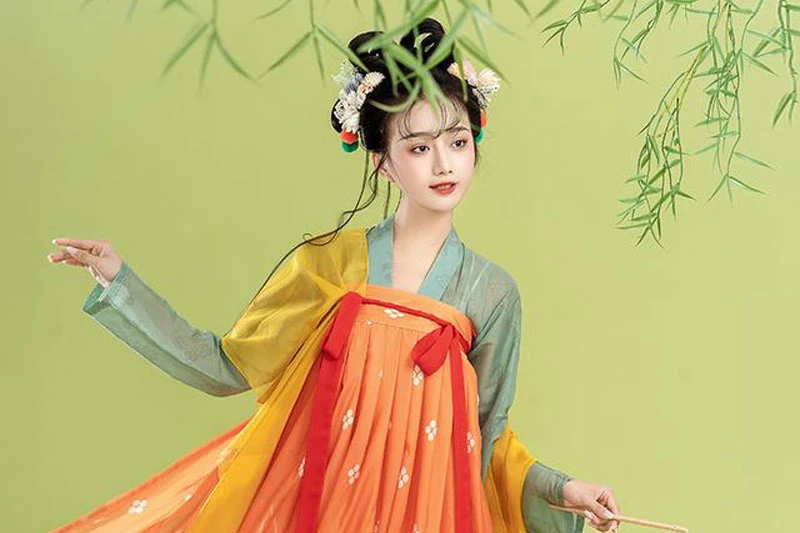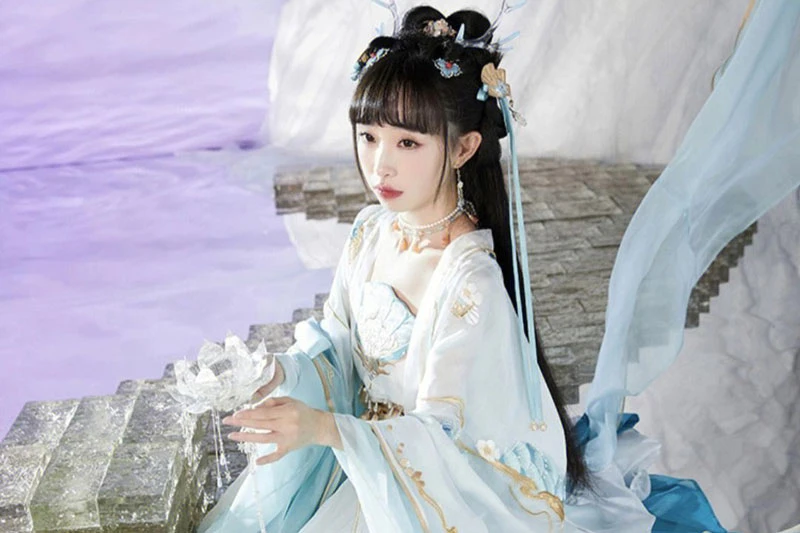The allure of Hanfu, the traditional Chinese attire with its rich history and cultural significance, extends beyond its elegant outer layers to the carefully chosen undergarments that complete the ensemble. In this comprehensive guide, we embark on a journey through the layers of Hanfu fashion, exploring the choices and considerations that go into what to wear underneath your Hanfu dress. From the intricacies of Hanfu underwear to the delicate balance of comfort and tradition, let’s unravel the secrets beneath the exquisite folds of Hanfu attire.
The Essence of Hanfu: A Brief Overview
Hanfu, the traditional clothing of the Han Chinese, boasts a history spanning thousands of years. Defined by its graceful lines, flowing sleeves, and intricate detailing, Hanfu is not just a garment; it is a cultural symbol that embodies the essence of Chinese heritage. Hanfu dresses are often composed of multiple layers, each holding cultural significance. From the outer robe known as the Yi to the cross-collar shirt called the Ru, the layers contribute to a harmonious and visually stunning ensemble. Beneath the resplendent folds of a Hanfu dress lies a layer of undergarments carefully selected to ensure both comfort and adherence to tradition. The choices made in this hidden layer are as crucial to the overall aesthetic as the outer layers themselves.
Understanding Hanfu Underwear
1. Traditional Undergarments:
Hanfu underwear forms the foundation of the ensemble, providing support and structure. Traditional options include undergarments like Zhongyi, a type of bodice or undershirt, designed to enhance the graceful drape of the outer layers.
2. Dudou: The Quintessential Hanfu Undergarment:
Dudou, also known as a bellyband or bodice, is a traditional undergarment worn by women beneath their Hanfu dresses. It is characterized by its square or rectangular shape, featuring embroidered patterns and ties for a secure fit.
3. Inner Pants: Enhancing the Flow:
Inner pants, often made of lightweight and breathable fabrics, play a crucial role in maintaining the modesty and comfort of the wearer. They are designed to complement the outer layers while ensuring ease of movement.
The Supportive Element: Choosing the Right Bra
1. Bra Styles for Hanfu
While traditional Hanfu attire may not necessitate a modern bra, contemporary adaptations often involve the integration of bras for enhanced support. The choice of bra style depends on the neckline and design of the Hanfu dress.
2. Strapless Bras for Elegant Necklines
Strapless bras are a popular choice for Hanfu dresses with intricate necklines or off-shoulder designs. They provide support without compromising the aesthetics of the dress, allowing the focus to remain on the grace of the Hanfu.
3. Choosing Comfort
Comfort is paramount when selecting a bra to wear under a Hanfu dress. Seamless and wireless options ensure a smooth silhouette while maintaining the wearer’s comfort throughout the day.
The Intersection of Comfort and Tradition: Lingerie Choices
For formal events or occasions, the choice of lingerie beneath Hanfu dresses may include more intricate and delicate options. Lace details and embroidery can add a touch of sophistication while remaining discreet. Maintaining a balance between modesty and personal style is key when selecting lingerie for Hanfu attire. The lingerie should complement the overall aesthetic while providing the necessary coverage.
The choice of fabric for lingerie is significant, with silk and satin being popular options for their luxurious feel against the skin. These fabrics not only contribute to comfort but also align with the opulence associated with Hanfu fashion.
Inner pants, often made from lightweight and breathable materials such as cotton or silk, contribute to the overall comfort of wearing Hanfu. These materials allow for ease of movement while ensuring proper ventilation.
The length and fit of inner pants are tailored to complement the outer layers of the Hanfu dress. They are designed to be discreet while providing coverage, allowing the outer layers to flow gracefully without interference.
The modesty and movement afforded by well-chosen inner pants are crucial elements in the overall comfort of wearing Hanfu. Whether navigating through crowded events or participating in traditional dances, the inner layers play a supportive role in the wearer’s experience.
Modern wearers of Hanfu may choose to adapt traditional undergarments to align with personal preferences and comfort. While some may opt for traditional Dudou and inner pants, others may choose modern undergarments that suit their lifestyle.
Adapting undergarments to personal preferences should be done with cultural sensitivity. Respecting the traditional aspects of Hanfu attire while incorporating modern elements allows for a seamless fusion of tradition and personal expression.
The undergarments worn beneath a Hanfu dress offer an opportunity for self-expression. Whether adhering strictly to tradition or incorporating modern elements, individuals can choose undergarments that align with their personal style and comfort.
Conclusion
In the intricate world of Hanfu fashion, the layers extend beyond the surface, encompassing carefully chosen undergarments that harmonize tradition with modernity. From the traditional Dudou and inner Zhongyi hanfu to the contemporary choices of bras and lingerie, what one wears beneath a Hanfu dress is a nuanced decision that balances cultural heritage, comfort, and personal style. As wearers navigate the layers of tradition, each choice contributes to the overall aesthetic, ensuring that the allure of Hanfu extends seamlessly from the hidden layers to the resplendent outer folds.


